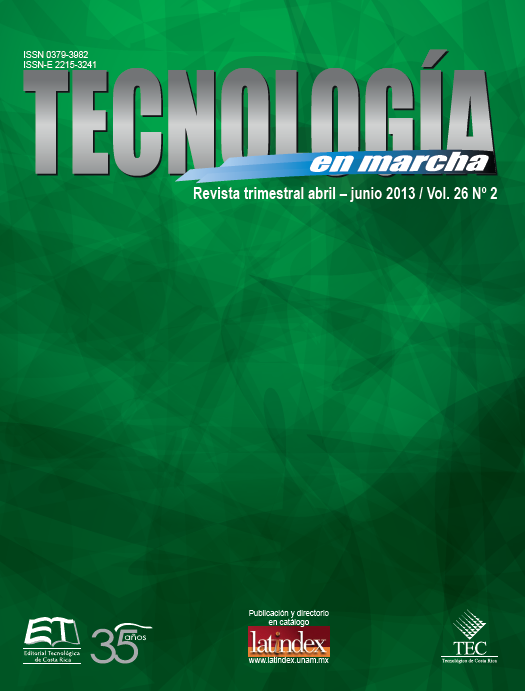Equation for estimating tree biomass in tropical forests of Costa Rica
Main Article Content
Abstract
One of the most relevant measures for climate change mitigation is the conservation and regeneration of forests in our countries. The amount of stored carbon in the forest biomass becomes a relevant variable for public policy. The present article analyses the association of some dasometric variables, easily obtained, with tree biomass with the purpose of indirectly estimating it, given that direct measurement of tree biomass is a complex and very expensive task.
The general objective of this study was to analyze the pattern shown by dasometric variables, easily obtained, with tree biomass to estimate it by using data from two tropical forests in Costa Rica, with the purpose of analyzing its potential general application in tropical forests in the entire country.
The bibliographic review helped to identify four possible models which estimate biomass in tropical forests. 907 trees were used with diameter at breast height (dbh) greater than 10 cm in two tropical forests in Costa Rica (Corcovado National
Park at the SW of the country, and Fila Carbón at the SE part, Caribbean slope), generating a biomass estimate as precise as possible. Dasometric variables (wood density, total height and dbh) were used to analyze their relationship with biomass with the objective of finding a model that could predict it. The final model uses, as independent variables, dbh and density. Dbh has a high correlation with tree total height, which is very difficult to obtain in the field, therefore it was not used. The variable density is very important as it varies between trees having the same structure but of different species. To estimate the model, a segmented regression technique was used as well as weighted mean squares to solve for heteroscedasticity. The final model met all statistical assumptions for a linear model according to the residual and parametric analysis. The determination coefficient resulted in 0,992. As a conclusion, the study proposes a methodological approach to estimate forest biomass, which is very useful to support decision-making on carbon storage in tropical forests. Biomass determination in the field in future plots is going to help the calibration of this approach to estimate biomass stored in tropical forests.
Article Details
Los autores conservan los derechos de autor y ceden a la revista el derecho de la primera publicación y pueda editarlo, reproducirlo, distribuirlo, exhibirlo y comunicarlo en el país y en el extranjero mediante medios impresos y electrónicos. Asimismo, asumen el compromiso sobre cualquier litigio o reclamación relacionada con derechos de propiedad intelectual, exonerando de responsabilidad a la Editorial Tecnológica de Costa Rica. Además, se establece que los autores pueden realizar otros acuerdos contractuales independientes y adicionales para la distribución no exclusiva de la versión del artículo publicado en esta revista (p. ej., incluirlo en un repositorio institucional o publicarlo en un libro) siempre que indiquen claramente que el trabajo se publicó por primera vez en esta revista.

